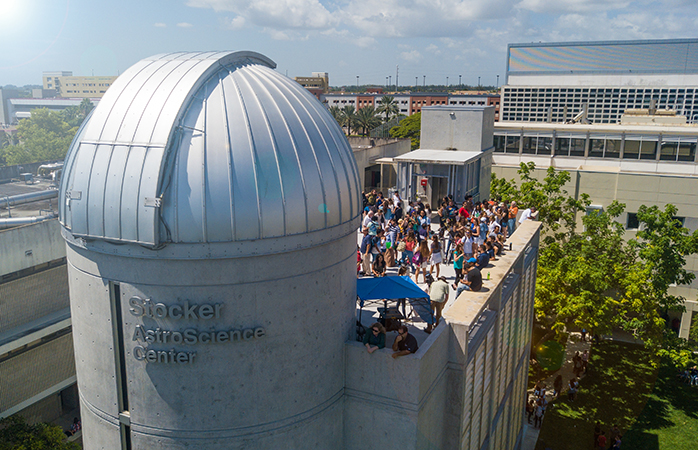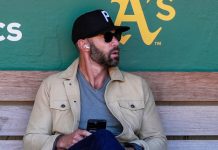When the Great American Eclipse descended on the United States, hundreds of FIU faculty and staff, students, members of the community and media flocked to FIU’s Stocker AstroScience Center’s solar eclipse watch party.
The center offered telescopes, solar eclipse viewing glasses and pinhole projectors for guests to use. Members of FIU’s Astronomy Club were on hand to show them how to use the devices and observe the eclipse safely. FIU astrophysicist James Webb gave lectures on the science and history of eclipses. And musicians performed space-themed music.
The Stocker AstroScience Center is an on-campus observatory featuring classrooms, research labs, a Star Trek-inspired control room and a dome housing a 24-inch telescope. The event was hosted Aug. 21 at FIU’s Modesto A. Maidique Campus.
[youtube https://www.youtube.com/watch?v=MZQMJ1WAKSM]“I really wanted to see the eclipse, it was a once in a lifetime experience,” said Claudia Mendoza, a freshman majoring in international relations. “I knew the a center had resources that weren’t available elsewhere, so I came here. The beauty of the eclipse was incredible.”
In South Florida and other places outside the eclipse’s path of totality, the moon obscured about 80 percent of the sun leaving the rest of the star exposed in the form an orange crescent. For people within the path of totality – a 70-mile wide band stretching from Salem, Ore. to Charleston, S.C. – the total eclipse caused daylight to turn into darkness, temperatures to drop and stars to shine in the middle of the day.
The Department of Earth and Environment treated undergraduates in its Introduction to Earth Science and Physical Geology labs to an afternoon at the Stocker Astroscience Center. For Anteneh Abiy, a teaching assistant, the eclipse was the perfect event to teach undergraduates earth system concepts through experience.
“This is a real-world demonstration of what happens when the sun, earth and moon align,” said Abiy, a geosciences Ph.D. student. “Their interaction affects short-term and long-term cycles on Earth, including tides, weather and seasons. This event allowed us to teach concepts covered in class. No amount of lab simulation and explanation could come even close to experiencing the eclipse first-hand.”
Webb, who serves as director of the Stocker AstroScience Center, organized the watch party. He has spent his career studying the creation and evolution of the universe, and he devoted 20 years to bringing the Stocker AstroScience Center to campus. For him, seeing so many people take an interest in eclipse was an opportunity to engage the public in science.
“The American public seems to be on the fence about the value of science,” Webb said. “Science is based on evidence, data, tests and more tests. The fact we can predict when an eclipse will happen down to the second decades in advance shows it works. It’s the very same science that explains and predicts global warming and evolution. I hope the astronomical event helps reaffirm the public’s faith in science.”







